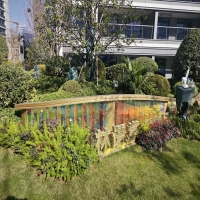Welcome to the website for landscape facilities products and knowledge.
How does the table’s construction minimize the risk of damage from prolonged exposure to moisture?
Modern table construction incorporates multiple strategic approaches to combat moisture-related damage. The foundation begins with material selection - manufacturers increasingly utilize waterproof engineered woods, marine-grade polymers, and properly sealed hardwoods that naturally resist water penetration. The core construction method involves layered protection systems where moisture barriers are integrated between surface materials and internal structures.
Advanced manufacturing techniques include precision-engineered joinery that eliminates gaps where moisture can accumulate, along with specialized sealing compounds applied to every connection point. Many quality tables feature elevated designs with protected undersides and waterproof coatings that create complete moisture encapsulation. The finishing process typically involves multiple layers of water-resistant lacquers, UV-cured polymers, or ceramic coatings that form impermeable surfaces while maintaining aesthetic appeal.
For metal components, manufacturers employ powder-coated finishes or stainless-steel alloys that prevent oxidation. Internal structural elements often include moisture-wicking channels and ventilation spaces that allow any accidental moisture ingress to evaporate naturally without causing structural compromise. These comprehensive construction methods work synergistically to create tables that maintain their integrity and appearance even in high-humidity environments, effectively minimizing risks from prolonged moisture exposure through intelligent design rather than aftermarket treatments.
Related search:

Recommendation
Metal and acrylic color-changing combined curtain wall for large-scale public landscape facilities